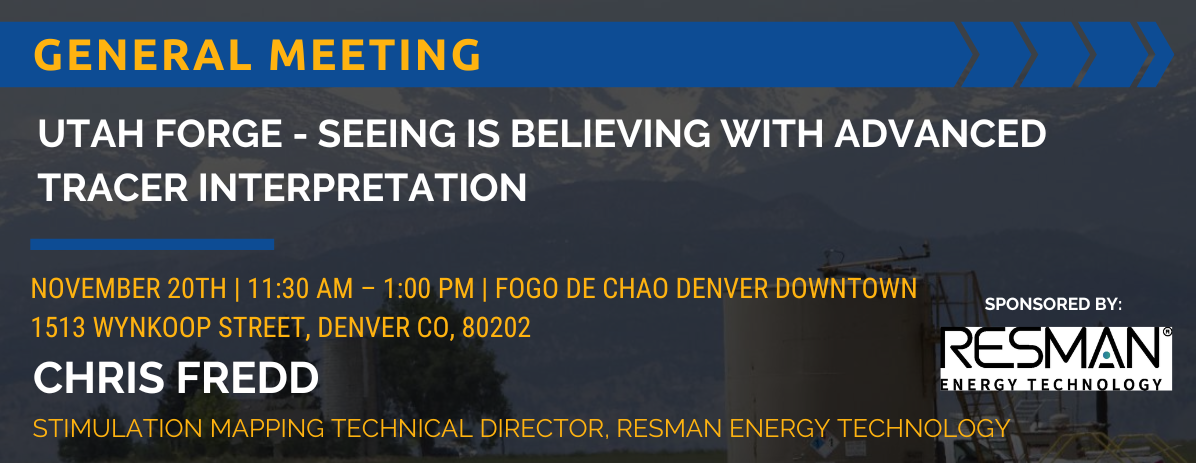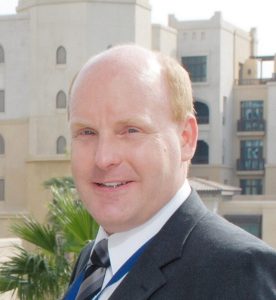
Register now for SPE Denver November General Meeting: Utah Forge – Seeing is Believing with Advanced Tracer Interpretation
This Event Reminder is Sponsored by:
November 20 @ 11:30 AM – 1:00 PM $15.00 – $55.00
Utah FORGE – Seeing is Believing
with Advanced Tracer Interpretation
Christopher N. Fredd, Olaf Huseby, Sven K. Hartvig, Partho Giri
Resman Energy Technology
The Utah FORGE project relies on multistage hydraulic fracturing to create flow connections between injection and production wells for renewable Enhanced Geothermal Systems (EGS) applications. Sponsored by the Department of Energy, this test laboratory has been used to evaluate the impact of completion and stimulation design changes, including the number of clusters per stage, fracturing fluid type, and fracturing methodology. Understanding and characterizing the impact of these design changes on the fracture connections is key to optimizing enthalpy output from the system.
This field case study presents insights gained from novel tracer interpretation at Utah FORGE. Unique chemical tracers were injected during each of the 8 fracturing stages in an EGS injection well, with additional tracer pulses injected at different times during one of the stages. Tracer responses were established from samples collected both from the injection well during flowback and the production well during a circulation test. Tracer interpretation provided quantitative PLTs for both wells, characterized the fracture connections (fracture driven interactions), characterized the fracture flow paths (e.g., fracture complexity), and estimated the fracture circulation volume and efficiency. These interpretations were compared with other measurements, including microseismic monitoring, fiber optic strain rate, and mechanical PLT logs. The results demonstrate that advance tracer interpretations offer a direct measure of flow paths not seen by other techniques and reveal the impact of the various design variables, such as a significant dependance on the number of clusters per stage, cluster runaway, and fracturing issues.
The novel tracer interpretation methodology is directly applicable to unconventional assets.

Chris Fredd serves as the Stimulation Mapping Technical Director for RESMAN Energy Technology. He has more than 25 years of experience in the energy sector and is a subject matter expert in stimulation, completions, and technology integration. Chris has a unique techno-commercial background and a proven track record of delivering leading technologies and practical solutions. He previously held a variety of senior technology leadership positions with SLB including Technology Center Director and Global Business Development Manager. Chris earned a Ph.D. degree in chemical engineering from the University of Michigan and holds more than 30 granted patents and 40 publications.



Recent Comments